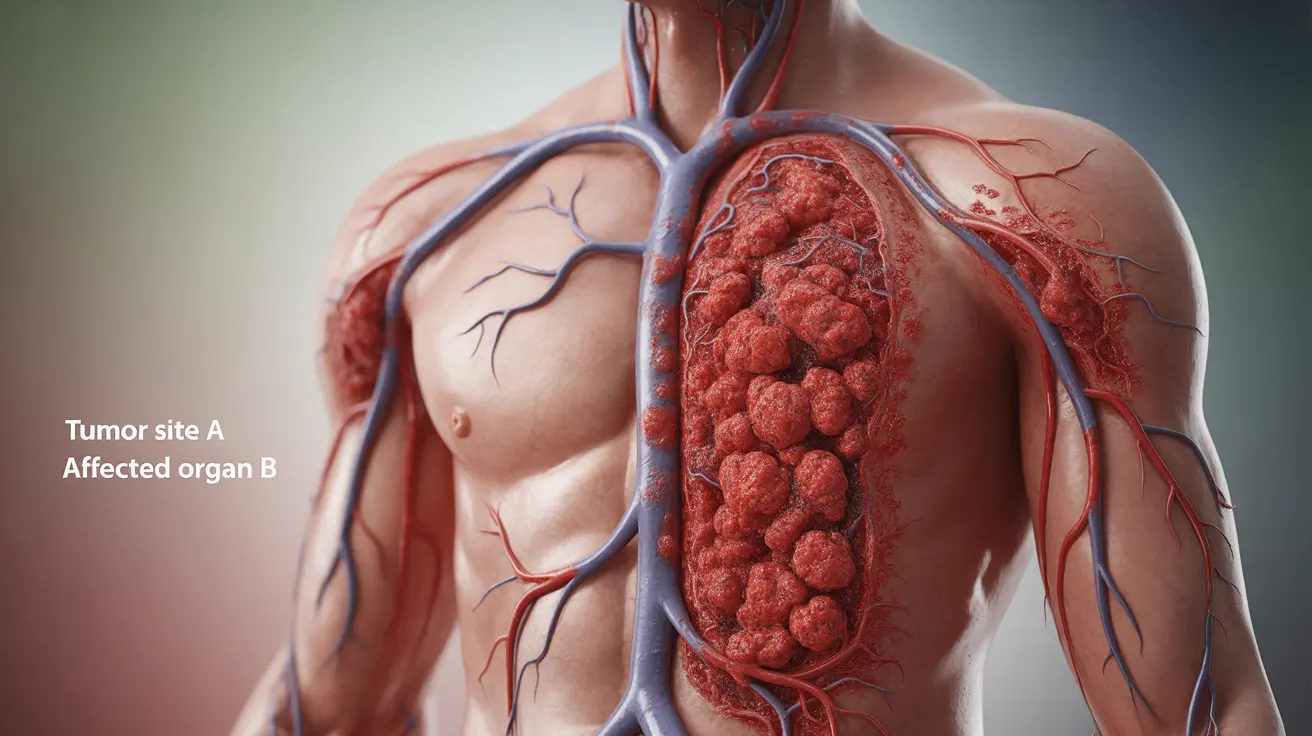Hemangiosarcoma in humans is a rare but serious form of cancer that develops in the blood vessels. This aggressive malignancy can occur in various parts of the body, affecting the lining of blood vessels and potentially spreading to multiple organs. Understanding its symptoms, diagnosis, and treatment options is crucial for both medical professionals and those affected by this condition.
While hemangiosarcoma is more commonly diagnosed in dogs, human cases require immediate medical attention and specialized care. This article provides comprehensive information about this rare cancer type, including its warning signs, diagnostic approaches, and current treatment strategies.
Key Signs and Symptoms of Hemangiosarcoma
The symptoms of hemangiosarcoma can vary significantly depending on the location of the tumor and its size. Common manifestations include:
- Unexplained bruising or bleeding
- Persistent pain in the affected area
- Weakness and fatigue
- Unexplained weight loss
- Shortness of breath
- Abdominal pain or swelling
In cases where the cancer develops in specific organs, additional symptoms may present. For instance, liver hemangiosarcoma might cause jaundice, while cardiac hemangiosarcoma could lead to heart rhythm abnormalities or chest pain.
Diagnostic Procedures and Testing
Diagnosing hemangiosarcoma typically involves multiple diagnostic tools and procedures:
Imaging Studies
- CT scans
- MRI
- Ultrasound
- PET scans
Tissue Analysis
A biopsy remains the gold standard for confirming diagnosis. This procedure involves taking a sample of the suspicious tissue for microscopic examination by pathologists who specialize in cancer diagnosis.
Treatment Approaches
Treatment for hemangiosarcoma usually requires a multi-modal approach, combining different therapeutic strategies:
Surgical Intervention
When possible, surgical removal of the tumor is often the first line of treatment. The success of surgery depends largely on the tumor's location and whether it has spread to other areas.
Chemotherapy
Systemic chemotherapy plays a crucial role in treating hemangiosarcoma, particularly in cases where the cancer has metastasized or cannot be completely removed through surgery.
Radiation Therapy
Some patients may benefit from radiation therapy, either as a primary treatment or in combination with other approaches to manage symptoms and slow disease progression.
Risk Factors and Prevention
While the exact causes of hemangiosarcoma aren't fully understood, several risk factors have been identified:
- Previous radiation exposure
- Chronic liver disease
- Genetic predisposition
- Environmental toxin exposure
Prognosis and Survival Rates
The prognosis for hemangiosarcoma varies significantly based on several factors:
- Tumor location and size
- Stage at diagnosis
- Overall health status
- Response to treatment
Frequently Asked Questions
What are the common symptoms and early signs of hemangiosarcoma in humans?
Early signs include unexplained bruising, persistent pain, weakness, and fatigue. Specific symptoms may vary depending on the tumor's location, but often include unexplained weight loss and bleeding tendencies.
How is hemangiosarcoma diagnosed and what tests are used to detect it?
Diagnosis typically involves multiple imaging studies (CT, MRI, ultrasound) and is confirmed through tissue biopsy. Blood tests and other specialized diagnostic procedures may be necessary depending on the suspected tumor location.
What treatment options are available for hemangiosarcoma in humans and how effective are they?
Treatment options include surgery, chemotherapy, and radiation therapy. The effectiveness varies depending on the cancer's stage, location, and the patient's overall health status. A combination of treatments often provides the best outcomes.
What are the main risk factors and causes associated with hemangiosarcoma in people?
Main risk factors include previous radiation exposure, chronic liver disease, genetic predisposition, and exposure to certain environmental toxins. However, in many cases, the exact cause remains unknown.
How does hemangiosarcoma prognosis vary depending on tumor location and stage?
Prognosis significantly varies based on tumor location, stage at diagnosis, and whether metastasis has occurred. Early detection and treatment generally offer better outcomes, while advanced-stage disease typically has a more guarded prognosis.




